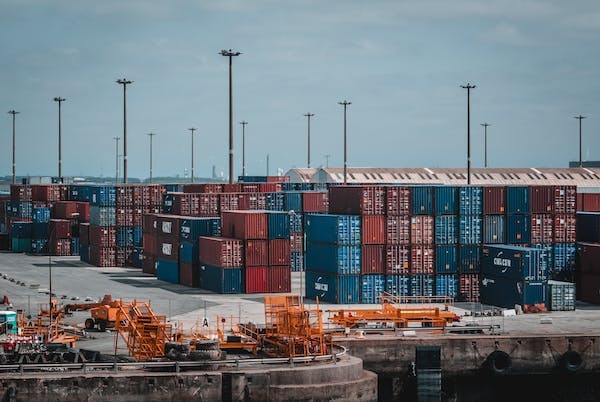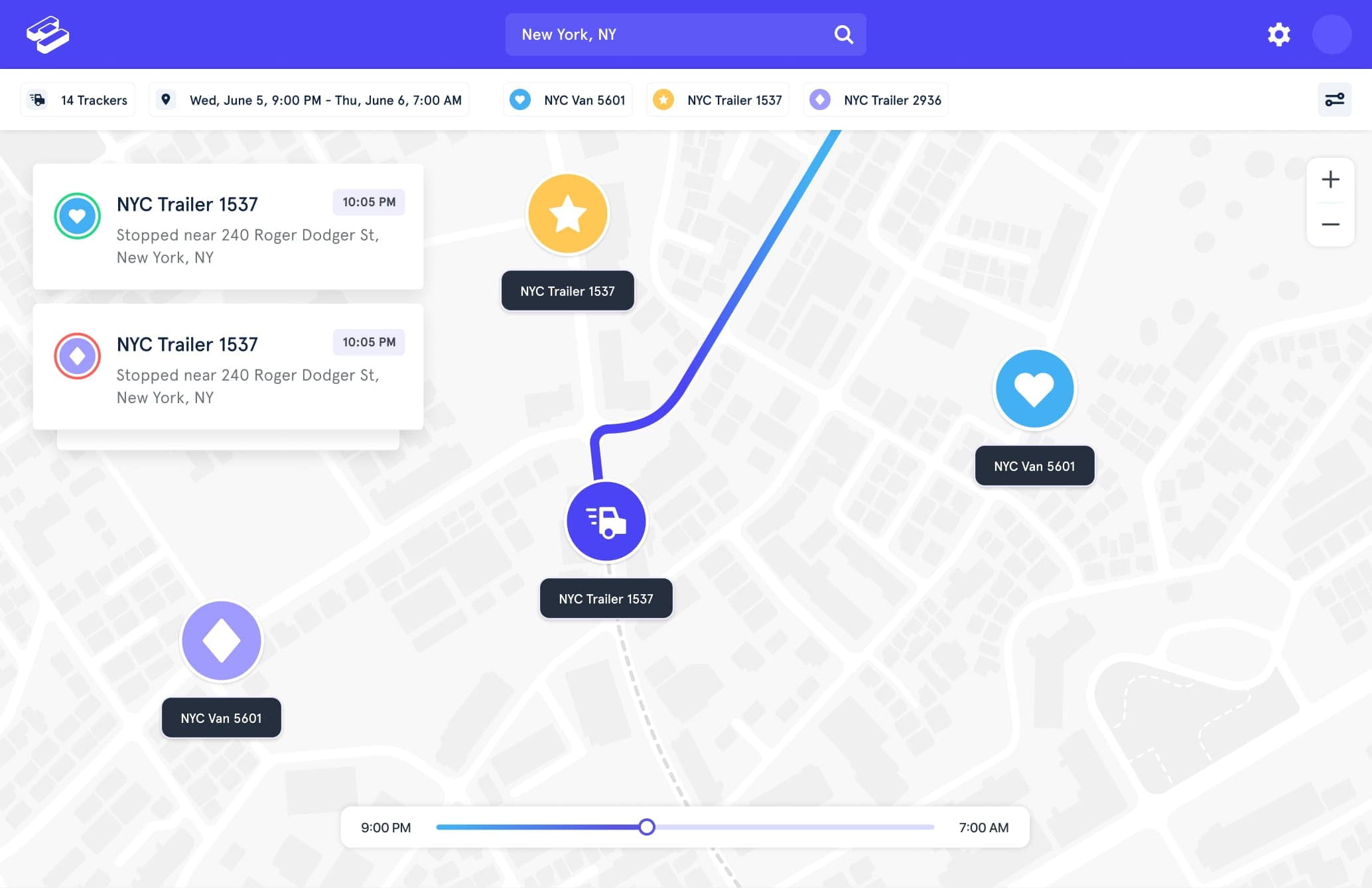Shipping goods across countries and continents is commonplace in today's interconnected world. Consumer demand drives the need for efficient delivery of a broad range of items, like electronics and food. At the same time, this massive cargo movement creates opportunities for theft. One of the most sobering cargo theft statistics is the $223 million in losses that occurred in 2022.
This eye-opening information reflects cargo-related criminal activity only in the U.S. and Canada and comes from CargoNet, a key provider of cargo theft statistics. Understanding what’s behind this data is essential for transportation professionals and anyone who depends on cargo for their company.
With this in mind, we’ll examine the reasons for cargo theft, analyze cargo theft statistics, and highlight what can be done to thwart cargo criminals. The stakes are high; cargo theft can have dire consequences for impacted businesses and lead to higher consumer prices.
Understanding Cargo Theft
When thinking about cargo theft, it's easy to imagine a dramatic heist scene from a movie. But in reality, cargo theft is a serious issue that plagues the transportation and logistics industry. At its simplest, cargo theft is the act of stealing goods while they are in transit. The result is significant financial losses and supply chain disruptions.
Cargo theft takes many forms, from sophisticated schemes involving insider information to opportunistic robberies at poorly secured locations. But the net result is always the same: someone takes a financial hit. The shipper, receiver, and cargo and insurance companies are all vulnerable.
Understanding cargo theft also involves recognizing the prevalence of these activities, being aware of the most common targets, and identifying where and when cargo theft is most likely to occur. This knowledge comes from CargoNet, a New Jersey-based firm that provides in-depth data and trends analysis to help companies minimize cargo theft risks.
What is CargoNet?
CargoNet is a company that provides solutions to reduce cargo theft and improve supply chain visibility. Initially founded in 2009 as CargoNet, it was acquired by risk management firm Verisk Analytics in 2020. Now operating as a Verisk subsidiary, CargoNet provides data analytics, theft monitoring, and investigative services. Its mission is to advance detection and recovery rates for stolen cargo and assets.
CargoNet maintains an active database of stolen cargo information. These details allow the company to identify cargo theft patterns and potential vulnerabilities in supply chains. While the company releases general statistics (which we’ll cover later), it offers high-level analytics to customers (called members) to better secure high-risk routes. Other services include active shipment monitoring and post-theft investigative support. The company also fosters collaboration between shippers, law enforcement, and insurance professionals.
The Importance of Cargo Data
Data is arguably the greatest weapon against cargo theft. Comprehensive and timely analytics provide invaluable insights into theft trends and hotspots. This crucial data provides a window into thieves’ modus operandi (defined as “a particular way or method of doing something,” if you’re unfamiliar with this term from TV crime dramas). Having these vital details on hand enables businesses to make informed decisions about shipments and related security measures.
Reams of cargo data go only so far—the quality of the information also matters. To be useful, cargo data has to be accurate, up-to-date, and relevant. These qualities ensure shippers and businesses have a clear picture of what’s happening in the real world. It’s the best way to identify supply chain vulnerabilities and proactively address these concerns.
As expected, gathering and analyzing vast amounts of data is no easy task. This is where CargoNet steps in with sophisticated data collection and analysis tools. These critical resources help businesses stay one step ahead of criminals.
Analyzing 2023 Cargo Theft Data
Let's look closer at recent cargo theft statistics from CargoNet. Unfortunately, data for the second quarter of 2023 shows that cargo theft is still alive and well. Food and beverage products are the most targeted commodities, followed by electronics. This interest is unsurprising as food and beverage products are consumable. Meanwhile, computers, televisions, and other high-tech gear have high value and are in demand in the black market.
CargoNet reports that cargo theft was most prevalent in California, Texas, and Florida. These states have major ports and transportation hubs, making them prime targets for cargo thieves. Warehouses, distribution centers, and parking lots remain the most common theft sites.
Other Q2 2023 data reveals a rise in "strategic" thefts. These are sophisticated operations involving insider information, advanced planning, and, often, multiple perpetrators. This trend highlights the increasing sophistication of cargo thieves and the need for equally sophisticated countermeasures, says CargoNet.
Other key findings include:
- A 57% increase in cargo theft events in Q2 2023 compared to Q2 2022, with over $44 million in stolen shipments.
- Theft of loaded trucks/trailers was up 17% year-over-year, concentrated in California, Texas, Florida, and Illinois. Burglaries decreased slightly but remained a significant threat on Interstate 40.
- Extortion and theft by conversion schemes grew significantly, especially by organized groups in Illinois and California targeting logistics brokers. A conversion scheme is a type of cargo theft where the criminal gains possession of merchandise through fraud or deception to unlawfully convert it for their own use.
Supply Chain Risk Trends Analysis
CargoNet’s most recent report also revealed several emerging trends in supply chain risks. One of these is the increasing reliance on technology in cargo theft operations. Thieves now use sophisticated technologies like GPS jammers and hacking tools to bypass security systems and track shipments. Signal jamming devices are illegal in the U.S., but this apparently isn’t a deterrent to enterprising thieves.
In addition, fictitious pickups increased dramatically, focused in the Los Angeles Metro Area and across the continental United States. Thefts targeted beverages, solar equipment, and auto supplies. A fictitious pickup is a kind of cargo theft that relies on deception. For example, a criminal will impersonate a legitimate trucking company and arrange to pick up a shipment.
Finally, the data also pointed to a rise in the theft of high-value, low-volume goods such as electronics and pharmaceuticals. These items are attractive targets due to their high resale value and the relative ease with which they can be transported and disposed of.
Factors Contributing to Cargo Theft
Cargo theft is a complex issue with many contributing factors. Of course, the value of the goods comes into play. Still, thieves also assess the demand for the stolen items, the ability to overcome security measures, and whether they have the skills and resources necessary to pull off a heist.
As CargoNet data shows, thieves are attracted to items that are easy to unload. That’s why food, beverages, and electronics are at the top of the list. In other words, obscure parts for uncommon machines are less likely to be at risk.
At the same time, thieves are attracted to poorly secured locations, vulnerable tracking systems, and a lack of security personnel. Fewer roadblocks create an inviting target. Crooks are also ramping up their technological savvy with sophisticated computer hacking efforts.
Methods of Theft
Cargo thieves today employ various sophisticated methods to carry out their crimes. According to data from CargoNet, some of the most common theft techniques include hijackings, facility break-ins, deceptive pickups, and cyber theft.
Hijackings involve directly targeting trucks or trailers while they are on the move. Thieves may force a vehicle to pull over on the highway or break into a parked trailer at a truck stop. Facility break-ins encompass criminals entering warehouses, distribution centers, or storage yards to steal cargo. Deceptive pickups utilize fraudulent credentials and identities to arrange cargo pickups that are never delivered. And cyber theft refers to hacking into transportation and logistics computer systems to redirect cargo to alternate destinations controlled by the thieves.
Each method presents unique challenges and requires tailored security measures in response. But they all speak to the sophisticated nature of today's cargo criminals, who leverage inside information, technology, and creativity to exploit vulnerabilities in supply chains. Companies must remain vigilant and continuously assess their facilities, personnel, and data systems for risks.
The Impact of Cargo Theft on Businesses
Financial loss isn’t the only consequence of cargo theft. When cargo is stolen, it can cause significant disruptions to the supply chain, leading to delays in delivery, lost sales, and increased costs.
Cargo theft can also damage relationships with customers and suppliers. Customers may lose trust in a company’s ability to deliver goods securely. The resulting loss of confidence leads to fewer sales and reduced customer loyalty.
Finally, cargo theft can lead to increased insurance premiums. Companies that experience cargo theft or trade in high-risk goods will see their insurance premiums rise. As the risk of theft increases, so does the cost of insuring the cargo, a hit to the bottom line.
Preventive Measures Against Cargo Theft
Fortunately, companies aren’t helpless when it comes to cargo theft. There are several techniques that can lessen the risk of having cargo stolen.
- Enhance Security: More robust security requires a multi-solution approach, including securing physical locations. This step should be supported by employing state-of-the-art video and alarm systems. Locks and seals on containers and vehicles can also deter thieves.
- Increase Training: Employees should be trained to recognize threats and follow security protocols. The net result is improved vigilance and greater awareness of suspicious activity.
- Review Insurance: While not necessarily a preventative measure, regularly reviewing your company’s insurance coverage can ensure you’re properly protected if a cargo theft loss occurs.
- Use Specialized Tools: Cargo theft-fighting tools take many forms. Intelligence from CargoNet helps businesses stay informed about threats and trends. You can also work with your insurance company or a risk management firm for assistance in developing a comprehensive plan to combat cargo theft. Technology can also make a difference. GPS tracking has changed how companies monitor their shipments.
GPS Tracking: The Game-Changer
One technology that has proven to be a game-changer for cargo security is GPS tracking. “As cargo moves through the supply chain, there are a lot of variables that can cause delays or missing cargo. Tracking your shipments and logistics gives you visibility into all the movement of your cargo, no matter what stage of the chain they are in,” remarks TJ Chasteen, product manager for Hapn, a leading GPS services provider.
When appropriately implemented, real-time GPS monitoring provides unprecedented visibility and theft prevention advantages. Not only can companies keep an eye on their cargo 24/7, but geofencing creates predefined geographical zones and routes. If a shipment goes off course or deviates from a planned route, an instant alert is sent. The technology also improves driver safety by detecting unauthorized stops or other suspicious route deviations that could indicate a hijacking or driver duress.
Comprehensive GPS platforms can also provide historical data enabling a review of past travel patterns that can be cross-referenced with reports about theft trends and high-risk locations. Lastly, GPS location information can be forwarded to law enforcement if suspicious activity is detected, increasing the odds of shipment recovery and criminal apprehension.
FAQs
What is cargo theft?
Cargo theft is the act of stealing goods while they are in transit. Thieves target truck trailers, cargo containers, warehouses, and other points along the supply chain.
What items are most often targeted for cargo theft?
Food and beverages are the most targeted items for cargo theft, followed by electronics. Criminals look for items that are easy to re-sell quickly on the black market.
Where does most cargo theft occur?
According to CargoNet, California, Texas, and Florida see the highest rates of cargo theft in the U.S. These states have major transportation hubs and ports, which make them hotspots. Warehouses and truck stops are common locations.
How do cargo thieves operate?
Thieves use techniques like hijackings, warehouse break-ins, deceptive pick-ups, and cyber hacking. Many leverage inside information and technology to exploit vulnerabilities in supply chains.
How can companies prevent cargo theft?
Prevention measures include enhancing security, training employees, using theft-fighting tools like CargoNet data, and implementing GPS tracking. GPS provides real-time visibility into shipments to detect suspicious activity.



